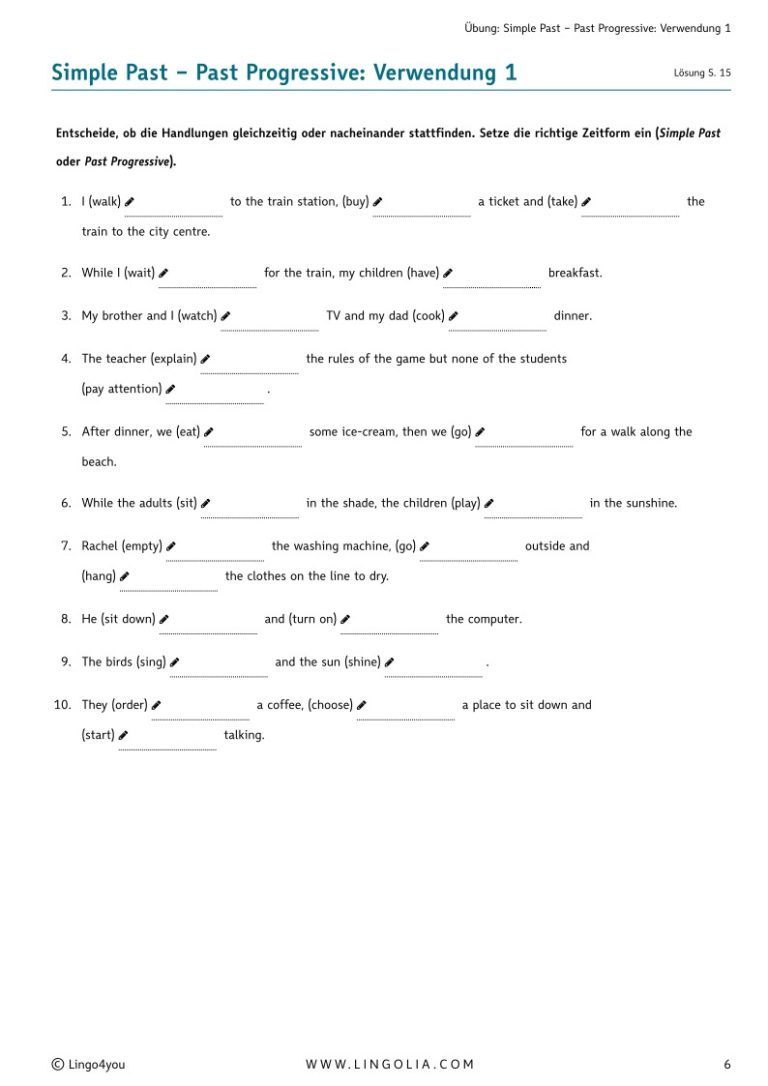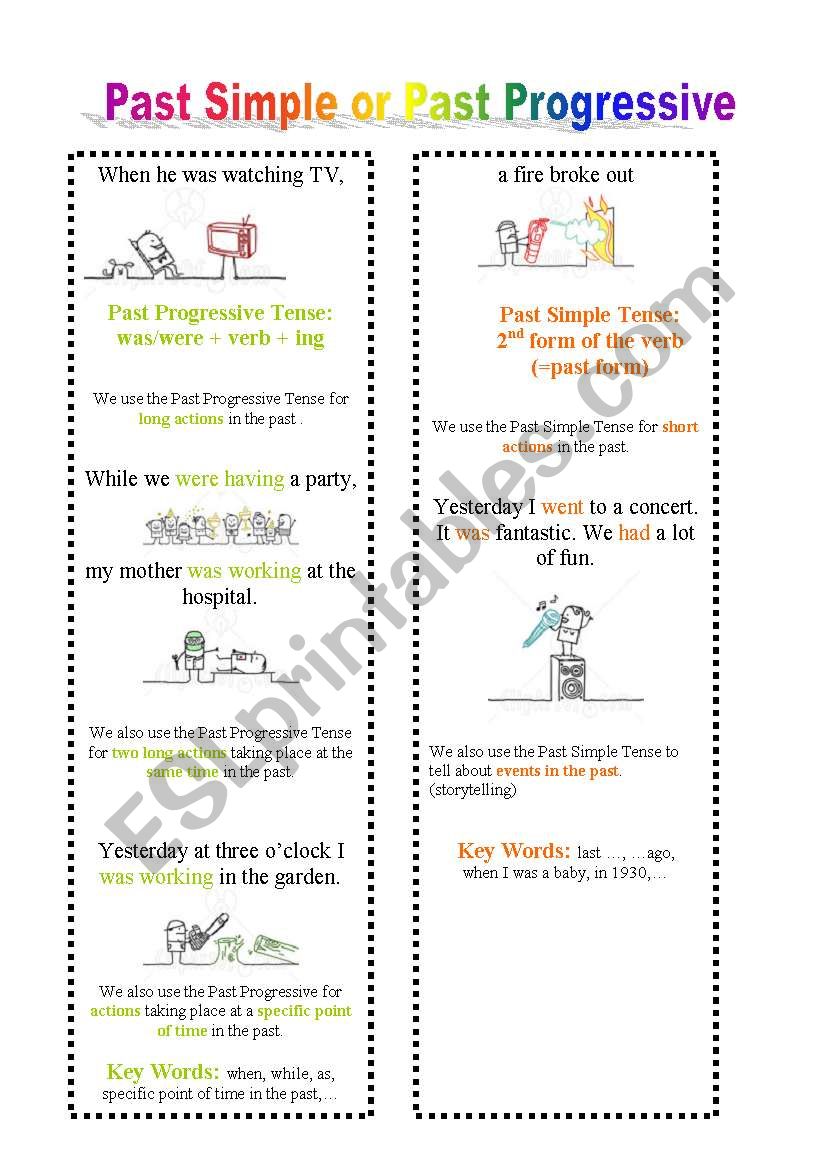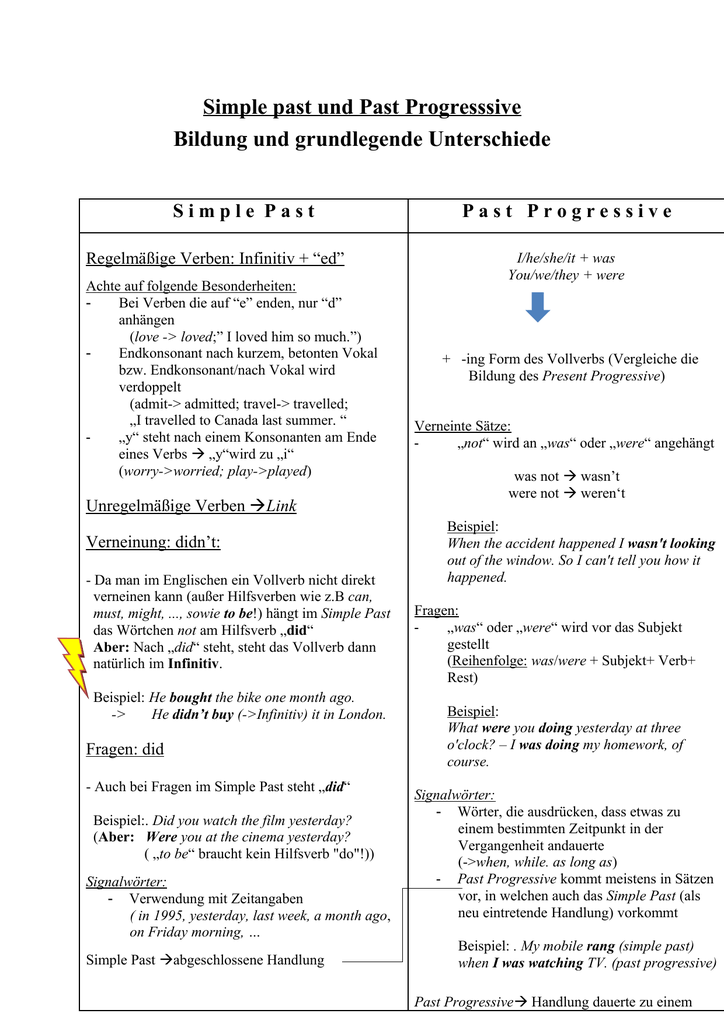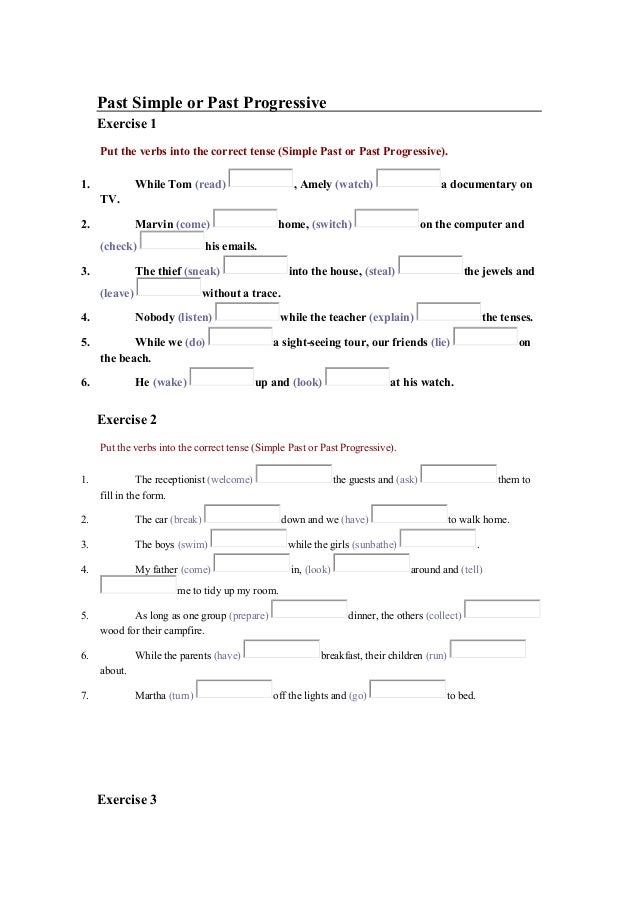
Pin auf Englisch Sekundarstufe Unterrichtsmaterialien
2. Signalwörter. Eine eindeutige Zuordnung dieser beiden Zeitformen durch Signalwörter ist nicht möglich. Das Signalwort yesterday kann das Simple Past verlangen, aber auch das Past Progressive. Es hängt davon ab, ob die Handlung als Verlauf (Past Progressive) betrachtet wird oder als einzelne Handlung (Simple Past). 3. Bildung.

Simple Past and Past Progressive PDF
Past Simple or Past Progressive - Exercise 6. Use the past simple or past progressive to complete the sentences. 1. George (fall) off the ladder while he (paint) the ceiling. 2. Last night I (read) in the bed when I suddenly (hear) a scream. 3. you (you watch) TV when I (call) you?

Simple past vs present perfect Übungen Unterrichtsmaterial im Fach Englisch Berufliche
Do you want to express that the actions in the past happened one after another or at the same time? New action or already in progress? If you want to express that a new action happened in the middle of another action, you need both tenses: Simple Past the new action and Past Progressive for the action already in progress.

Past Perfect Vs. Past Perfect Progressive ESL Library Blog Simple past verbs, Teaching
Simple Past - Past Progressive - Contrasted Simple Past - Past Progressive - contrasted Differences and similarities in the Simple Past and the Past Progressive 1. Use 2. Form 3. Examples 3.1. Affirmative sentences 3.2. Negative sentences 3.3. Questions 4. Spelling 5. Use Both tenses are often used in one sentence:

Gegenüberstellung Simple Past Past Progressive Lingolia Shop
The past progressive tense is used to refer to an ongoing past action that was interrupted by another past action (in the simple past tense) or to two past actions that were taking place at the same time. It can also be used to indicate that something was habitual (usually in a critical way). Examples: The past continuous tense

Simple Past oder Past Progressive? Übungen mit Lösungen Englisch nachhilfe, Past progressive
The past progressive tense is used to describe an ongoing activity in the past. For example: John was baking a cake. They were painting the fence. Often, the past progressive tense is used to set the scene for another action. For example: John was baking a cake when the storm started. They were painting the fence while I was cutting the grass.

Englisch Arbeitsblätter Klasse 6 Simple Past Carl Winslow Grundschule
started was starting were starting. to rain while she. watered was watering were watering. the flowers in her garden. When I. opened was opening were opening. the door, it. rained was raining were raining. .

Past Simple or Past Progressive 2 pages ESL worksheet by kiru
Here's an interactive exercise about the past simple and past continuous tenses - choose the correct tense.

Übung Gemischte Zeiten simple past, past progressive, present perfect, present perfect
Grammar explanation The past continuous and the past simple help us to show how two past actions or situations are connected. Past simple The past simple shows us that an action was in the past, not in the present. Regular past simple verbs have - ed at the end (e.g. called, played, arrived ).

Simple Past Past Progressive Erklärung
Welcome to a new episode from English plus podcast today's episode, we will talk about grammar and we will focus on the past simple and the best continuous. So today it is going to be about how to talk about the past. And of course the focus will be on the past simple and the past continuous. So without further ado, Let's start talking.

Past simple or past progressive
The past progressive tense, also called the past continuous tense, emphasises a continuing or incomplete action in the past. We can use this tense to describe what was in progress at a specific moment in time in the past. It is formed with the past form of the auxiliary verb be (was/were), and the present participle or -ing form of the main verb.

Past Simple vs. Past Continuous. English grammar exercises, Learn english, Teaching english
The past progressive describes an action that was in progress at a specific time in the past. It can be used: To describe an action that started in the past and was interrupted by another action: He was writ ing an e-mail when the phone rang. When the phone rang, he was writ ing an e-mail. While he was writ ing an e-mail, the phone rang

Simple Past and Past Progressive, Definition and Example Sentences Simple Past and Past
Past Progressive is generally used when describing actions that started in the past and show continuity in a certain period of time. Action to be considered has started in the past, and continuity has been in the past. So it is not going on right now. "Did" is used as an auxiliary verb in Simple Past sentences.

Wann Simple Past Wann Past Progressive
In English grammar, the past progressive is a verb construction (made up of a past form of the verb "to be"—"was" or "were"—and a present participle) that conveys an ongoing action in the past that has been completed. The past progressive is also known as the past continuous . Simple Past Vs. Past Progressive

Past Simple. Past Progressive online presentation
Past simple vs. past progressive: Ate, were eating A2. Explanation. A verb is a word or phrase that is the main part of a sentence and expresses action or a state of being. The past simple tense is used to talk about an action that happened before now. There are regular and irregular past tense forms.

Past progressive and simple past
Some are interchangeable and some aren't. Example: The train leaves in ten minutes. We will have to hurry up or we are going to miss the train. It can be difficult for non-native speakers to understand the difference between simple, progressive and perfect tenses in English. Here, we compare the English tenses and explain the difference.